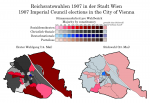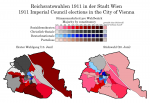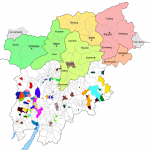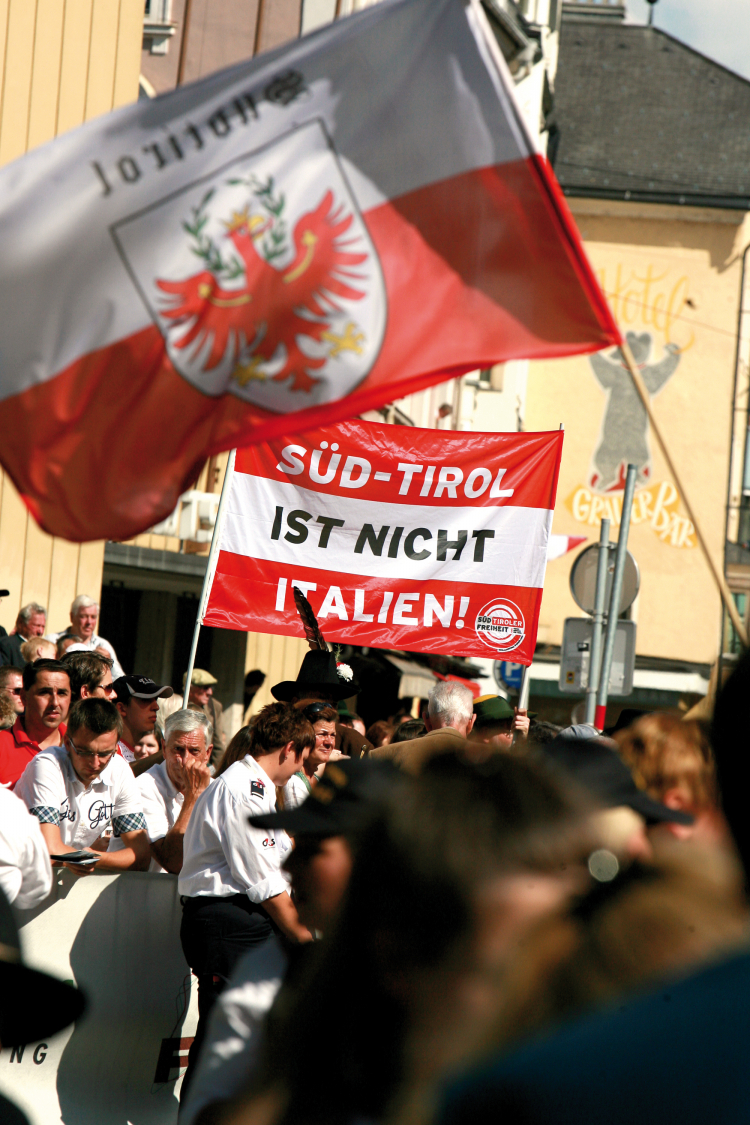Some more Austria, and I believe it's time to tag
@ajross once more.
Vienna was not technically its own state yet - it was formally part of Lower Austria - but as the Imperial capital and by far the largest city in Austria, it enjoyed a lot of privileges and autonomy that other Austrian cities lacked. In 1892, a state law had seen it expand to take in most of its right-bank suburbs, and in 1904 the annexation of Floridsdorf across the river followed, bringing the city to the boundaries it would retain for the next forty years. Just before the Floridsdorf annexation, the city passed two million inhabitants, which made it the largest city proper in the German-speaking world (although only because Berlin still had loads of independent suburbs).
As such, it was entitled to no less than 33 seats in the Reichsrat, which were assigned in such a way that each of the city's twenty-one districts got at least one seat each, and then just completely nonsensically after that. The old inner city, for example, was split into four seats with around two to three thousand electors each, while the districts of Margareten, Meidling, Hietzing, Rudolfsheim and Hernals, with over 20,000 electors each, were all left undivided. I suspect this is where
@Nanwe's point about the seats being distributed based on tax revenue comes in, because the inner city was among the richest parts of Vienna while all the other districts mentioned (except arguably Hietzing) were working-class suburbs. Either way, it was very dumb and strange, in what's becoming something of a recurring theme here.
Vienna's party politics, too, were quite different from what we've come to expect from its later history. In 1907, the city was still in the grips of its extremely popular, long-serving and, er, questionable mayor, Karl Lueger. Lueger was one of the leaders of the "populist" wing of the Christian-Social Party, which sought to break with the party's clerical-conservative forebears to become a party for the Catholic, non-socialist masses. To this end, it employed a bit of
Rerum novarum-inspired welfarism coupled with heaps and heaps of racism and sectarianism. Lueger was particularly famous for his virulent antisemitism, which Adolf Hitler would later cite as an inspiration in the formation of his own politics. It's been argued that Lueger was less of a true believer in scientific racism than he was a populist who happily went after the Jews as a vote-winning tool. He did have quite a lot of Jewish friends in his personal life (I know, I know), and when asked to explain how this squared with his political views, he's famously supposed to have replied
"Wer a Jud' is, bestimm i" ("I decide who's a Jew").
Still, it's pretty much inarguable that the political climate of Vienna was drowning in antisemitism in the early 20th century, and that it was one of the most important cudgels used to keep the city's voters in line behind Lueger and his programme. The result of this was that the Christian Socials swept the city in the first free Reichsrat elections, successfully bullying the pan-Germanist bloc into standing down for them in most of the working-class areas. The goal was to deny the Social Democrats the chance at a runoff, and this was broadly successful. Only six seats went to a runoff in 1907, and overall, the Social Democrats only went away with ten of the 33 seats.

By the time of the next election, Lueger had died, and the Viennese Christian Social organisation was thrown into chaos as a result. This meant that the three camps of (German-)Austrian politics competed on something resembling equal footing for the first time, and the number of runoffs increased massively. Which in turn meant that the Social Democrats swept most of them, since the German nationalists tended to support them against the Christian Socials. The reason for this is that the two blocs shared a common antipathy to the Habsburgs and the Church, and the German nationalists had a pretty strong liberal streak, especially in Vienna. This support was reciprocated in most of the bourgeois districts, which correspondingly swung from the Christian Socials to the German nationalists. As a result, the party that had dominated the city just four years earlier was reduced to four seats in the city, and would never quite recover.







